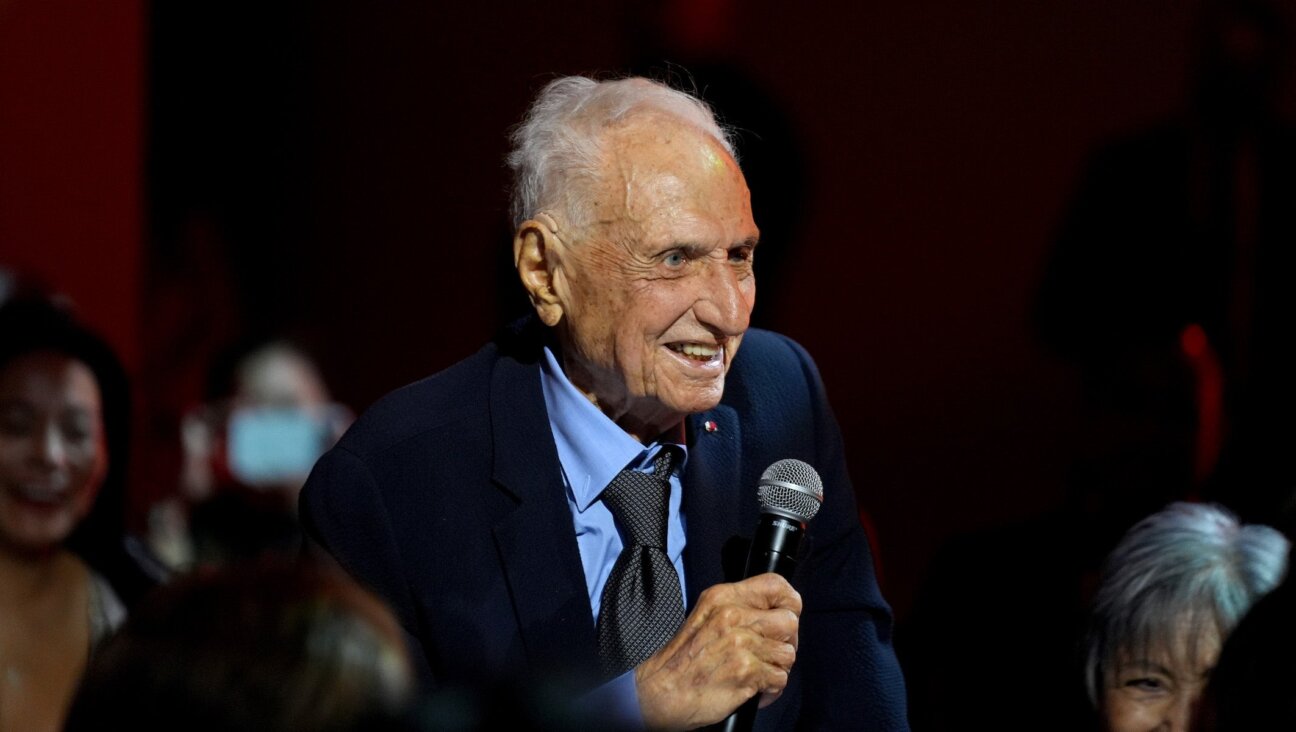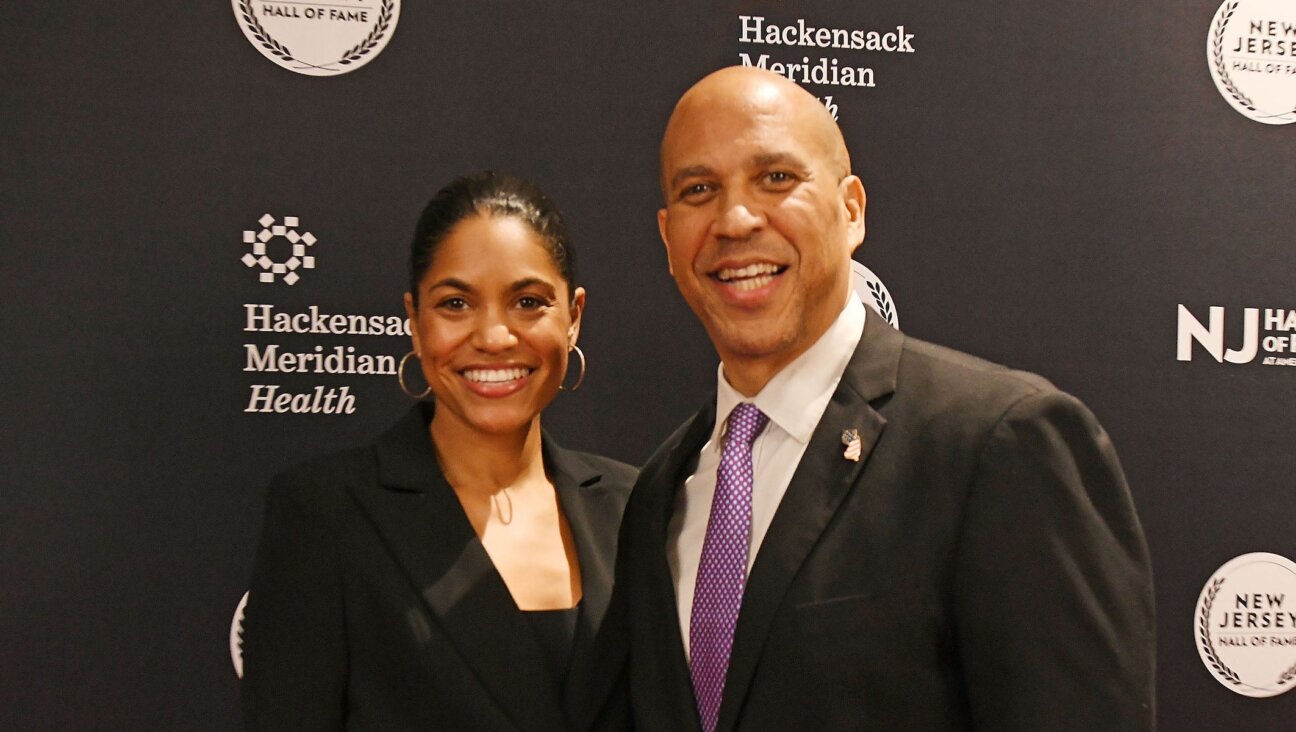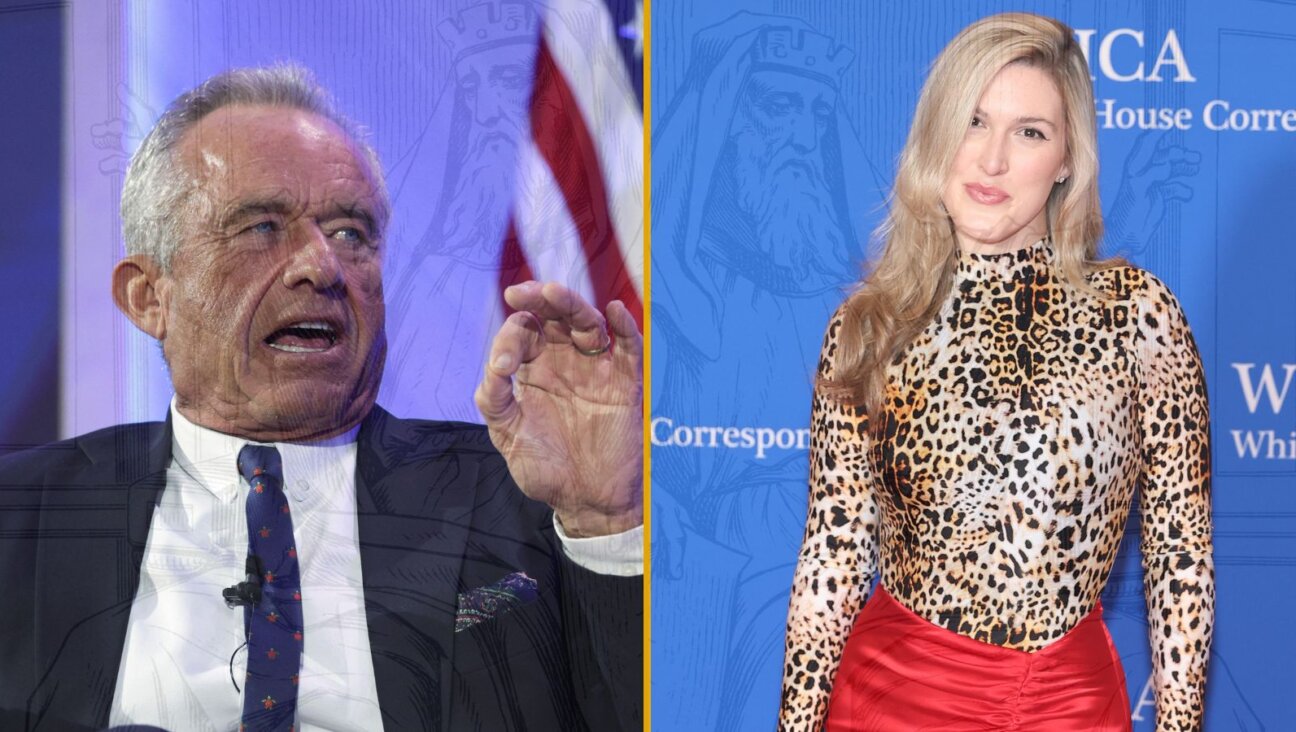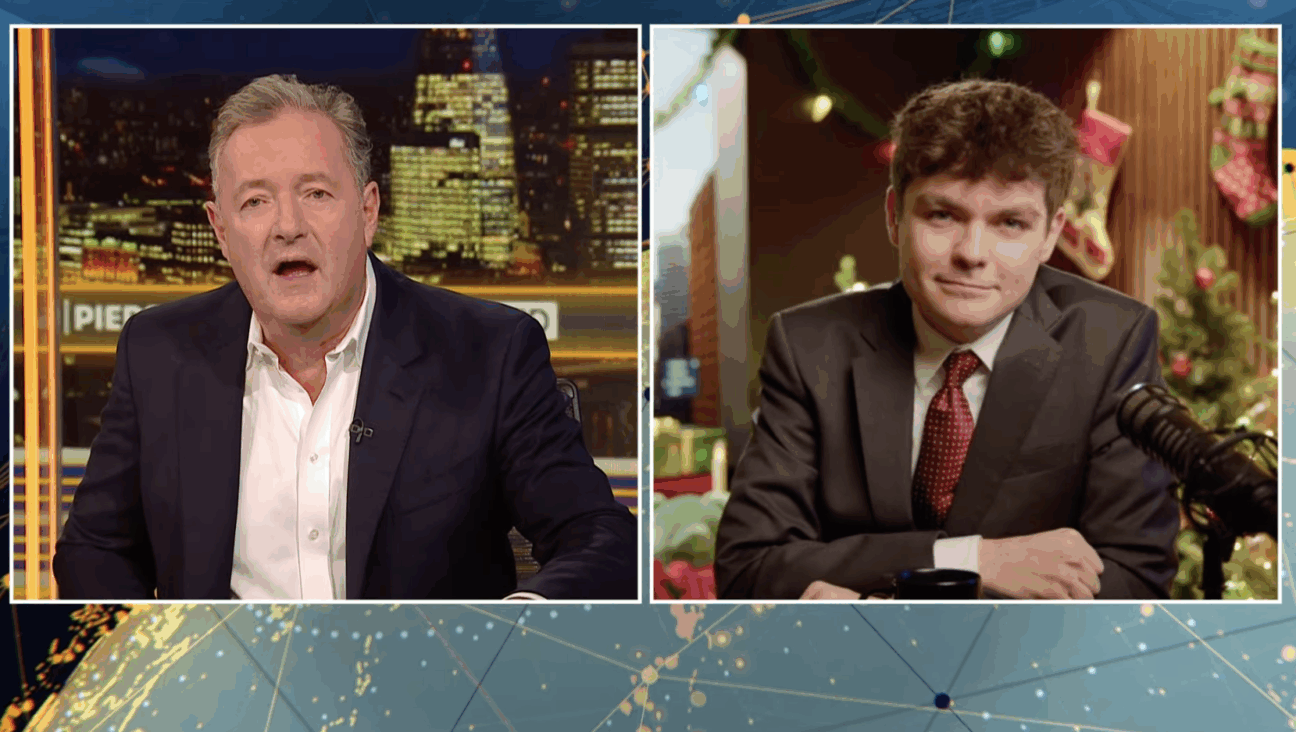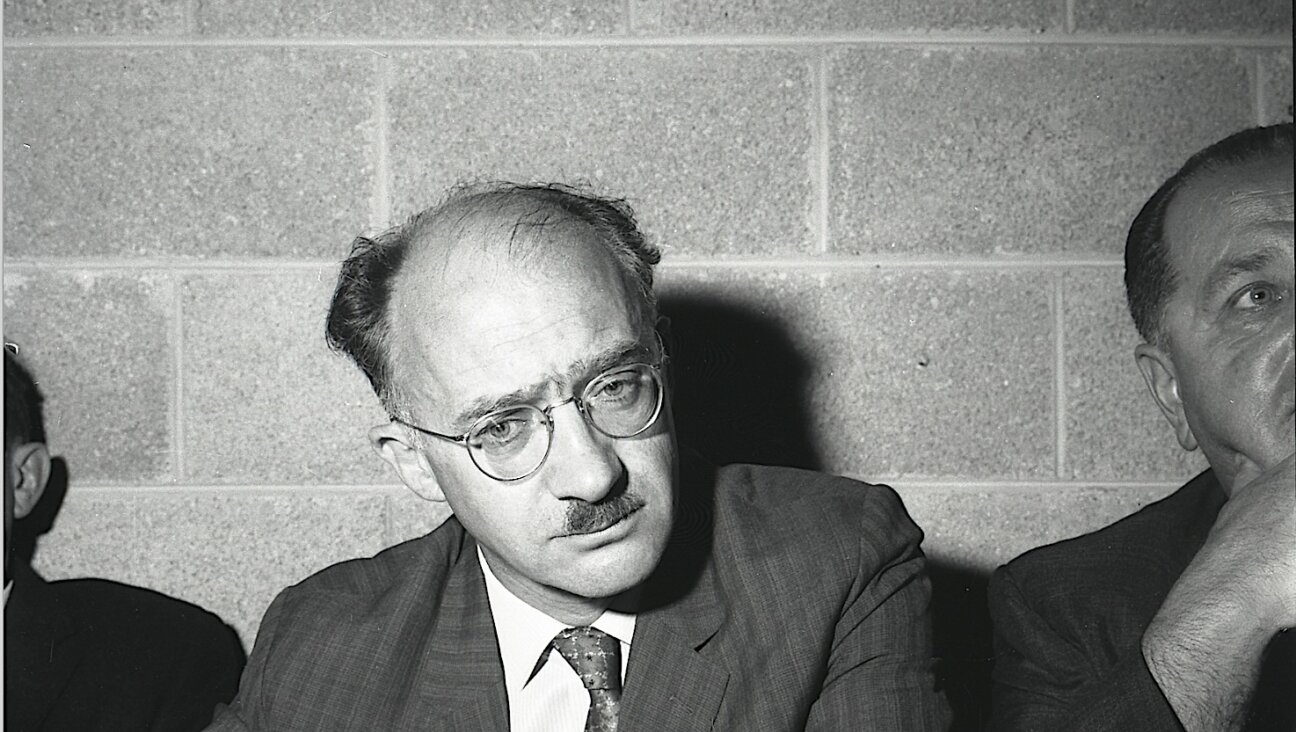Surging LGBTQ enrollment in Jewish seminaries signals ‘astounding’ shift in US rabbinate
A surge in LGBTQ rabbinical students reflects long-delayed access and a changing model of spiritual leadership, raising questions about a possible ‘queering’ of the non-Orthodox rabbinate

Hannah and Ally Karpel-Pomerantz met as rabbinical school classmates at Hebrew Union College. They are set to be ordained at the end of the school year. Courtesy of Hannah and Ally Karpel-Pomerantz
(JTA) — Hannah Karpel-Pomerantz and her wife met as rabbinical school classmates in Jerusalem four years ago, bonding over their love of Jewish texts and rituals. This August, as they began their final two years of school, Hebrew Union College splashed the couple across its website in an essay celebrating their relationship.
“HUC wanted to feature me and my wife as a love story — as something that makes the school look good,” Karpel-Pomerantz said. “It signals that American progressive Jewish life has evolved to the point where LGBTQ inclusion is a no-brainer.”
A new national study suggests just how deeply that shift has taken hold: 51% of the rabbinical students surveyed identified as LGBTQ+. It’s an eye-popping finding that provides the first empirical evidence for a phenomenon many in the non-Orthodox rabbinate have been noticing for years.
“If you take a historical perspective, it is rather astounding, given the fact that rabbinical schools weren’t even accepting LGBTQ students until the 1990s or later,” said Jonathan Krasner, a professor of Jewish studies at Brandeis University.
The demographic shift can be linked to a broader transformation in the rabbinate, as the old “sage on the stage” model gives way to a more pastoral, responsive style of leadership. Aspiring rabbis are entering the field with new expectations, while congregations are placing unprecedented demands on clergy, fueling a placement crisis that has left many pulpits empty.
As they make the case for their students, educators say LGBTQ rabbis, shaped by the long fight for inclusion, are emerging as the leaders the community needs amid polarization and rising antisemitism.
“For 23 years, SVARA has invited queer Jews into the long project of upgrading the tradition,” said Rabbi Benay Lappe, founder of the queer yeshiva whose alumni now populate rabbinical schools across the country. “Queer people understand upheaval, resilience, and creativity — the same toolkit that catalyzed rabbinic Judaism itself. When people who’ve had to reimagine their own lives step into spiritual leadership, they bring clarity and empathy that enrich the whole community.”
Lappe added, “The question is not ‘Why so many queer people?’ but rather, ‘Why is this extraordinarily good news for the future of Judaism?’”
The new research, published by a group called Atra, bills itself as the first comprehensive, cross-denominational study of the American rabbinate. But its headline-grabbing LGBTQ+ figure requires some clarification: It is based on a survey of 181 volunteer respondents, with limited participation from Orthodox students, making it impossible to know how precisely it reflects the entire population of aspiring rabbis.
Still, the study’s lead researcher, Wendy Rosov, said the finding should not be dismissed. “Even if the estimate is high, it’s not far off — it is not a crazy statistic,” she said.
Rosov noted that seminaries do not systematically track students’ sexual orientation or gender identity, but several told her team informally that as many as half of their current students identify as LGBTQ+. She also pointed to broader survey data showing rising rates of LGBTQ identification among young Americans — and among young Jews in particular — which helps explain the pattern.
There is clear year-over-year evidence within the study itself. Among surveyed rabbis ordained before 2004, only 7% identified as LGBTQ+. The share rises to 15% for those ordained between 2005 and 2014, 29% for the 2015-2024 cohort, and 51% among current students.
The study does not attempt to explain the trend, and Rosov declined to offer theories, citing a lack of data.
Scholars and educators expect the dramatic numbers to stir murmurs in some corners of the Jewish community about the “queering of the rabbinate.” Krasner said those anxieties echo an earlier chapter in Jewish history, when women began enrolling in rabbinical schools in significant numbers and some predicted a “feminization” of Judaism and a loss of rabbinic authority.
“Those concerns were overblown,” he said. What mattered then, he added, is what matters now: that people can see themselves reflected in their religious leaders. “I’m not worried about the rabbinate ‘going queer.’ We should be cautious about that kind of anxiety.”
Deborah Waxman, president of Reconstructing Judaism, remembers that earlier era firsthand. When she came out to her mother during her first year of rabbinical school in 1993, the reaction was immediate — and telling.
“My mother cried,” Waxman recalled. “She said, it’s already going to be so hard for you as a woman rabbi, I’m so worried that you will never get employed as a lesbian.”
At the time, Waxman said, those fears weren’t unfounded. Many queer students worried that being open about who they were could jeopardize their ordination or leave them unemployable. Waxman’s career bridges both eras, and she has learned to reinterpret the social anxieties of the past as markers of how dramatically the landscape has shifted.
One leading theory among rabbinic educators is that the surge in LGBTQ students represents not only a new openness but also generations of pent-up aspiration. For much of modern American Jewish history, LGBTQ Jews were barred from the rabbinate. Once that barrier fell, seminary leaders say, the long-deferred interest began to surface.
Andrew Rehfeld, president of Hebrew Union College, calls it a “backlog of interest.”
“For years, gay and lesbian Jews were excluded not only from leadership, but from many communities themselves,” Rehfeld said. “Now that the doors are open, it’s not surprising there’s an equilibrium happening.”
Shuly Rubin Schwartz, chancellor of the Jewish Theological Seminary and a historian of American Judaism, said she is reminded of the pattern that unfolded before. When the rabbinate first opened its doors to women, she said, there was an initial wave of interest from people who had long been denied access.
“You have a group that has been marginalized throughout Jewish history finally given the opportunity to exercise leadership,” she said. “What we’re seeing now is similar.”
Another theory holds that the trend reflects a deeper affinity between queer identity and Jewish spiritual life.
Lappe sees this clearly through SVARA, her queer-centered yeshiva, where thousands of LGBTQ Jews have engaged in Talmud study over the past two decades. Many of her students later apply to rabbinical school.
“This shift isn’t an accident,” she said, referring to the new study. “It’s a predictable outcome of a tradition that has always been renewed by people moving through upheaval. When people who have had to courageously reimagine their own lives step into spiritual leadership, they bring clarity, empathy, and a commitment to justice that enriches the whole community. That shows you where this energy is coming from.”
For many aspiring rabbis, that process begins long before they arrive on campus.
Karpel-Pomerantz said LGBTQ Jews often come to the rabbinate with a level of self-awareness that grows out of the work of understanding their identities. “LGBTQ people are sometimes almost on the fast track to having done a lot of the soul-searching that can help prepare people for the rabbinate in a meaningful way,” she said.
The increase in LGBTQ enrollment has come in tandem with an evolution in the role of a rabbi. Once defined primarily as a learned authority who delivered sermons and rendered halakhic decisions, the rabbi was positioned above the community. Today, rabbis are expected to serve as pastoral caregivers, counselors, organizers and companions in moments of crisis. Their authority is less formal and more relational, grounded in presence, empathy and trust rather than in scholarly distance.
Krasner noted that LGBTQ Americans are generally overrepresented in “helping professions” like social work, counseling, and education. Rabbinic work, increasingly centered on pastoral care, fits that pattern.
Karpel-Pomerantz sees the same phenomenon in herself and in many peers. “I’m in rabbinical school because I want to be a clinical pastoral educator,” she said. “First, I need to become a hospital chaplain, and then I can learn to teach other people how to do it.”
Even as seminaries become more welcoming, the job market is still uneven for LGBTQ clergy. Rabbi Leora Kaye, director of career services for the Central Conference of American Rabbis, the association for Reform rabbis, said she tries to prepare students honestly.
“I can’t promise them they won’t encounter bias,” she said. “What I do promise is that we’ll do everything we can to make it as safe as possible. We respond when situations arise. We don’t let people face it alone.”
As a sign of the Reform movement’s commitment, she cited anti-bias training that is now a requirement for search committees in congregations before they begin interviewing rabbis.
Often, Kaye said, LGBTQ graduates find congregations that are enthusiastic about their leadership.
“We see many situations where sexuality or gender identity is not an issue at all, or where it’s embraced,” she said. “Communities want rabbis who are compassionate, grounded, and capable. And many of them are explicitly seeking rabbis who reflect their own diversity.”
Rehfeld also said that despite broad acceptance in many congregations, discrimination still happens. He recalled how one HUC graduate ended an interview process after being asked inappropriate questions.
“The harm was real for the student,” he said. “But the bigger loss was for the congregation. Discrimination keeps talent out of the pool.”
The student ultimately found a “fantastic” pulpit, he added: “They still ended up in middle America in a relatively rural place that they never thought about living.” He sees the outcome as a testament to the movement’s ethical guidelines and support systems.
Both working as rabbinic interns at congregations in the Los Angeles area, Karpel-Pomerantz and her wife feel confident about what they have to offer and optimistic about what will come after graduation.
“At this particular moment in history, there is something really valuable about people who have multiple marginalized identities being willing to take on the role of leader of communities,” she said. “And I hope that our communities are able to see the presence of queer folks as the gift that I believe it to be.”




